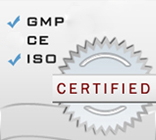
ELISA Kits
- • Anemia ELISA kits
- • Allergy ELISA kits
- • Autoimmune Disease kits
- • Bone Metabolism ELISA kits
- • Blood bank ELISA kits
- • Cancer ELISA kits
- • Cardiac Markers ELISA kits
- • Diabetes Assays ELISA kits
- • Drug test ELISA kits
- • Fertility ELISA kits
- • Food ELISA kits
- • Infectious Disease ELISA kits
- • Other ELISA Kits
- • Parasitology ELISA kits
- • Steroid ELISA kits
- • Thyroid ELISA kits
Rapid Tests
- • Allergy Rapid tests
- • Bone Metabolism
- • Cancer Rapid tests
- • Cardiac markers Rapid tests
- • Drug Tests
- • Fertility Rapid tests
- • Hepatitis Panel
- • Infectious Disease & other tests
- • Other
- • Ovulation Rapid tests
- • Pregnancy tests
- • Urine Reagent Strips tests
IFA Kits
Chemiluminescence Immuno Assays
- • Allergy Assays
- • Autoimmune Thyroid Assays
- • Cardio-Vascular Monitoring
- • Diabetes Assays
- • Fertility Assays
- • Growth Deficiency
- • Infectious Disease Assays
- • Others
- • Steroid Assays
- • Thyroid Assays
- • Tumor Marker Assays
Serology Tests
- • ASO (Anti-Streptolysin-O)
- • CRP (C-Reactive Protein)
- • Mono (Infectious Mononucleosis)
- • RF (Rheumatoid Factor)
- • RPR (Rapid Plasma Reagin)
- • SLE (Systemic Lupus Erythematosus)
Instrumentation



Progesterone CLIA kit - (Chemiluminescence Immuno Assay)
| Name |
Progesterone CLIA kit - (Chemiluminescence Immuno Assay) |
|---|---|
| Category Name | Steroid Assays |
| Test | 96 |
 |
 |
 |
Progesterone CLIA kit - (Chemiluminescence Immuno Assay) description:
Chemiluminescence Immunoassay (CLIA) detection using Microplate luminometers provides a sensitive,
high throughput, and economical alternative to conventional colorimetric methodologies, such as Enzymelinked immunosorbent assays (ELISA). ELISA employs a label enzyme and a colorimetric substrate to produce an amplified signal for antigen, haptens or antibody quantitation. This technique has been well established and considered as the technology of choice for a wide variety of applications in diagnostics, research, food testing, process quality assurance and quality control, and environmental testing. The most commonly used ELISA is based on colorimetric reactions of chromogenic substrates, (such as TMB) and label enzymes. Recently, a chemiluminescent immunoassay has been shown to be more sensitive than the conventional colorimetric method(s), and does not require long incubations or the addition of stopping reagents, as is the case in some colorimetric assays. Among various enzyme assays that employ light-emitting reactions, one of the most successful assays is the enhanced chemiluminescent immunoassay involving a horseradish peroxidase (HRP) labeled antibody or antigen and a mixture of chemiluminescent substrate, hydrogen peroxide, and enhancers. The CLIA Kits are designed to detect glow-based chemiluminescent reactions. The kits provide a broader dynamic assay range, superior low-end sensitivity, and a faster protocol than the conventional colorimetric methods. The series of the kits covers Thyroid panals, such as T3, T4, TSH, Hormone panels, such as hCG, LH, FSH, and other panals. They can be used to replace conventional colorimetric ELISA that have been widely used in many research and diagnostic applications. Furthermore, with the methodological advantages, Chemiluminescent immunoassay will play an important part in the Diagnostic and Research areas that ELISAs cannot do. The CLIA Kits have been validated on the MPL1 and MPL2 microplate luminometers from Berthold Detection System, Lus2 microplate luminometer from Anthos, Centro LB960 microplate luminometer from Berthold Technologies, and Platelumino from Stratec Biomedical Systems AG. We got acceptable results with all of those luminometers.
Progesterone is a C21 steroid which is synthesized from both tissue and circulating cholesterol. Cholesterol is transformed to pregnenolone which is then converted via a combined dehydrogenase and
isomerase to progesterone. The principle production sites are the adrenals and ovaries and the placenta
during pregnancy. The majority of this steroid is metabolized in the liver to pregnanediol and conjugated as a glucuronide prior to excretion by the kidneys. Progesterone exhibits a wide variety of end organ effects. The primary role of progesterone is exhibited by the reproductive organs. In males, progesterone is a necessary intermediate for the production of corticosteroids and androgens. In
females, progesterone remains relatively constant throughout the follicular phase of the menstrual cycle. The concentration then increases rapidly following ovulation and remains elevated for 4-6 days and decreases to the initial level 24 hours before the onset of menstruation. In pregnancy, placental
progesterone production rises steadily to levels of 10 to 20 times those of the luteal phase peak. Progesterone measurements are thus performed to determine ovulation as well as to characterize luteal
phase defects. Monitoring of progesterone therapy and early stage pregnancy evaluations comprise the
remaining uses of progesterone assays. The Progesterone EIA kits are designed for the measurement of total progesterone in human serum or plasma.
The progesterone EIA is based on the principle of competitive binding between progesterone in the test
specimen and progesterone-HRP conjugate for a constant amount of rabbit antiprogesterone. In the
incubation, goat anti-rabbit IgG-coated wells are incubated with 25 μl progesterone standards, controls,
patient samples, 100 μl progesterone-HRP Conjugate Reagent and 50 μl rabbit anti-progesterone reagent at room temperature (18-25 �C) for 90 minutes. During the incubation, a fixed amount of HRP-labeled progesterone competes with the endogenous progesterone in the standard, sample, or quality control serum for a fixed number of binding sites of the specific progesterone antibody. Thus, the amount of progesterone peroxidase conjugate immunologically bound to the well progressively decreases as the concentration of progesterone in the specimen increases. Unbound progesterone peroxidase conjugate is then removed and the wells washed. Next, a solution of chemiluminescent substrate is then added and read relative light units (RLU) with a Luminometer. The intensity of the emitting light is proportional to the amount of enzyme present and is inversely related to the amount of unlabeled progesterone in the sample. By reference to a series of progesterone standards assayed in the same way, the concentration of progesterone in the unknown sample is quantified.
Home > Chemiluminescence Immuno Assays > Steroid Assays > Progesterone CLIA kit - (Chemiluminescence Immuno Assay)
ELISA kits - Rapid tests- Drug tests- Pregnancy test - IFA kits - CLIA assays - Serology tests - Instrumentation
©1992 Diagnostic Automation/Cortez Diagnostics Inc. All rights reserved.








